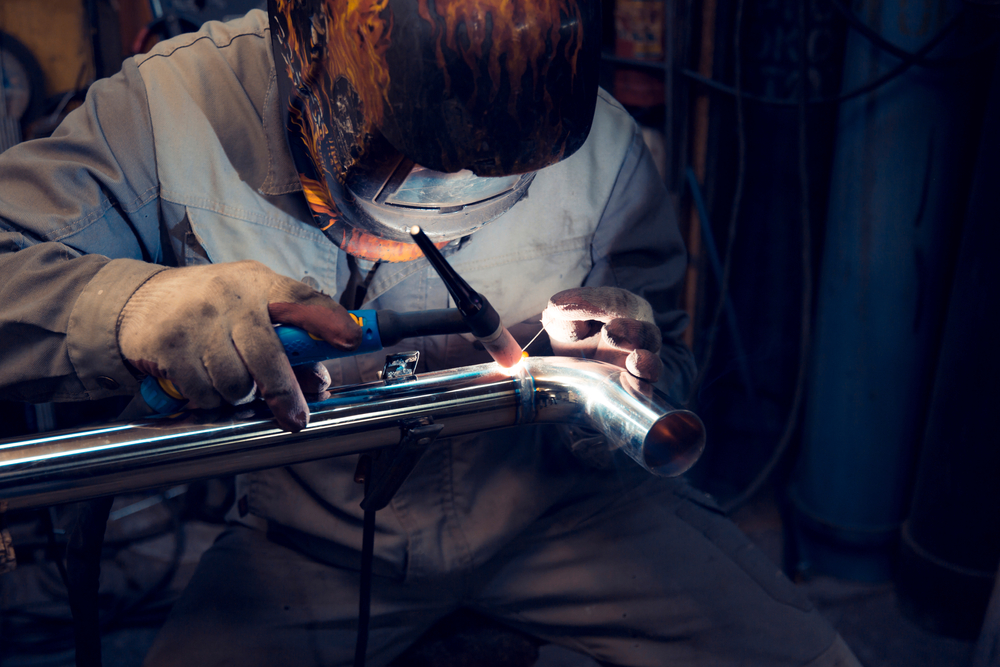
Stainless Steel is an integral part of modern architecture, from decorative components to mechanical and electrical constructions. Stainless steel is an alloy made of iron, nickel, carbon, molybdenum, and chromium.
The additives, nickel, and chromium impart an oxide layer making it resistant to rust and corrosion. It is this shiny and reflective layer that distinguishes stainless steel from plain steel.
Manufacturing Process of Stainless Steel
Step 1 – Heating the Raw Materials to Melting Point
This step is as simple as it sounds. The raw materials are placed in an electric furnace and melted. According to most sheet pile manufacturers, it usually takes 8 to 12 hours for the materials to completely melt.
Step 2 – Removing Excess Carbon from the Conglomeration
Once the conglomeration of metals is molten, it is time for the next step. A vacuum oxygen decarburization (VOD) is used to eliminate the excess carbon content. Sometimes an argon oxygen decarburization (AOD) is used for the removal process. This equipment allows the manufacturer to control the extent of carbon that is removed. Tweaking the carbon removal results in stainless steel of different varieties like Grade 310, Grade 304, and more. The amount of carbon in turn determines the tensile strength and brittleness of the steel.
Step 3 – Fine-Tuning the Final Product
Tuning or stirring is used to fine-tune the final product. The molten concoction of metals is stirred to distribute the different components evenly throughout the mixture. Stirring may also be used to remove certain components from the concoction. We stress this step to ensure that the final stainless steel formed has the same quality throughout. Any sheet pile manufacturer will tell you; how essential uniformity is for good quality products.
Step 4 – Forming/Casting the Metal
The next leg of the steel manufacturing process is to subject the metal to different forming processes. One of the most popular processes is hot rolling the steel, while it’s above its crystallization point. Hot rolling is mostly used to create blooms and billets. While hot rolling gives a rough finish, for more precise measurements and finishes, manufacturers will use cold rolling.
The other casting methods used to transform the steel slabs into sheets, plates, and strips are picking and cutting. This step in the process is where different techniques are applied to obtain stainless steel of different grades and appearances.
Step 5 – Annealing the Stainless Steel
It is the process where the manufacturer administers controlled heating and cooling on the steel to relieve the internal stress. Annealing is considered necessary since internal stress can change the mechanical properties of stainless steel. During the treatment, the steel should be descaled to protect the oxide layer on the surface.
Step 6 – Cutting and Shaping into Desired Products
Now that we have progressed to the second last step, the steel is cut and shaped to obtain the desired final product. For example, making thick metal sheets will require the metal to be cut using mechanical shears. Sheet pile manufacturers use CNC punching machines or laser cutters to work with thinner sheets.
Step 7 – Putting on Surface Finishes to the Finished Stainless Steel
The final part of the manufacturing process is applying surface finishes. Surface finishes are usually applied to blooms, billets, or wires. Usually, the surface finish will be customized depending on the product’s intended usage. A common practice is grinding down the surface to get rid of impurities and smooth it down.
Bigfoot Pipes and Piling was founded in 2019 and is currently headquartered in Puyallup, Washington. Bigfoot has made quite the name for itself as a supplier of new, used, and surplus steel pipes and piling products. Reach out to us at 800-877-7453 (toll-free) for more information on our products and services.
